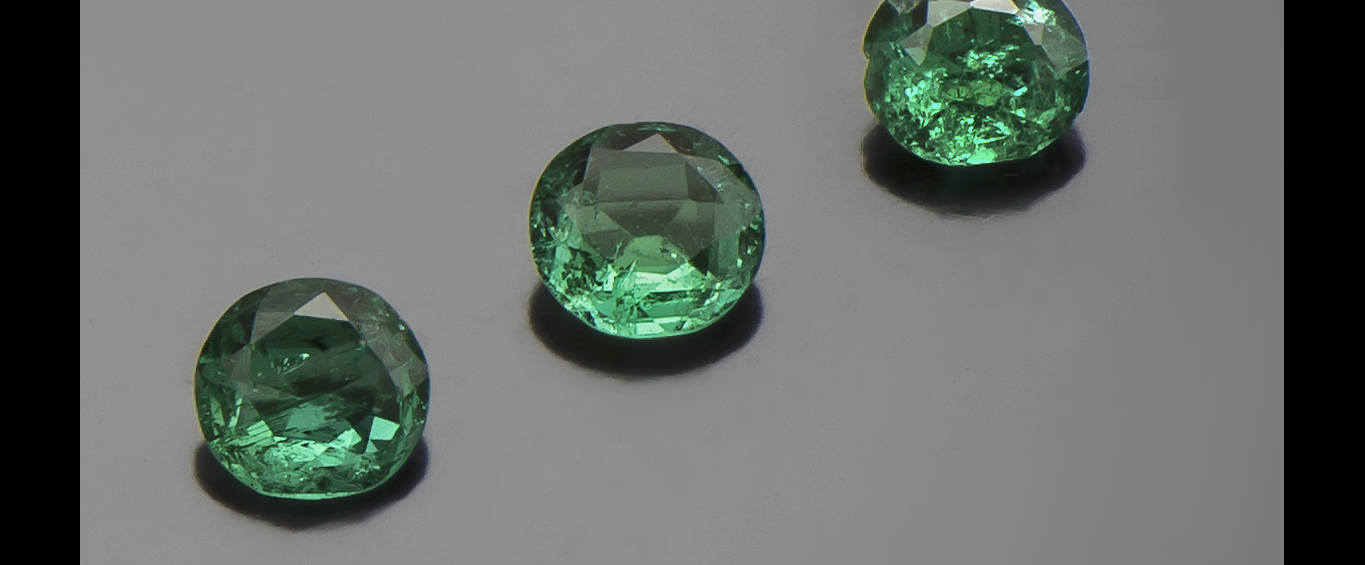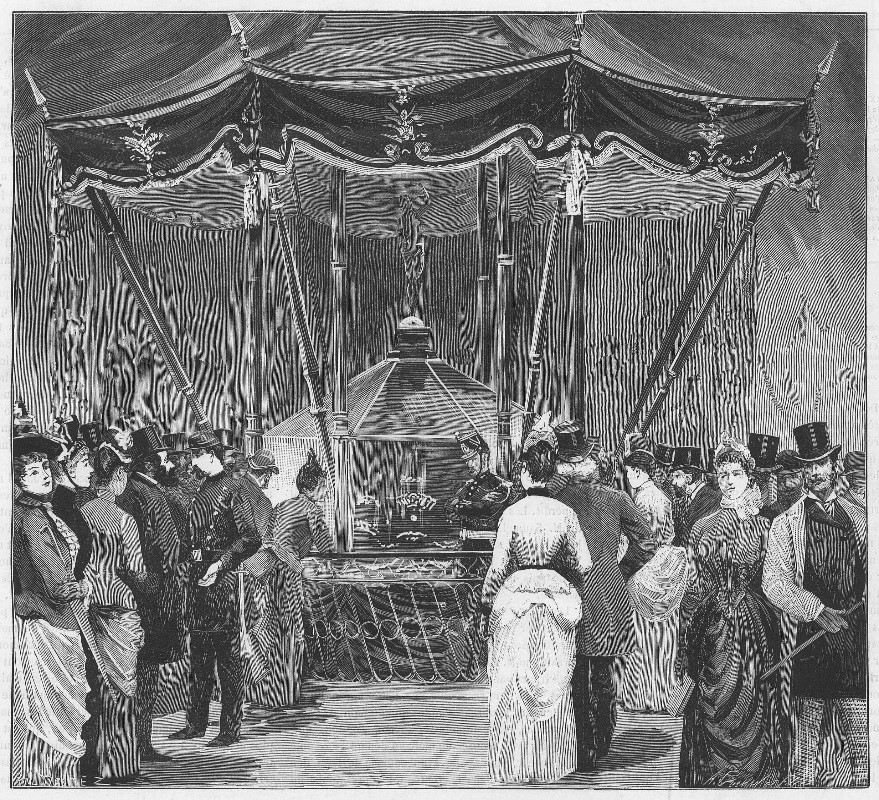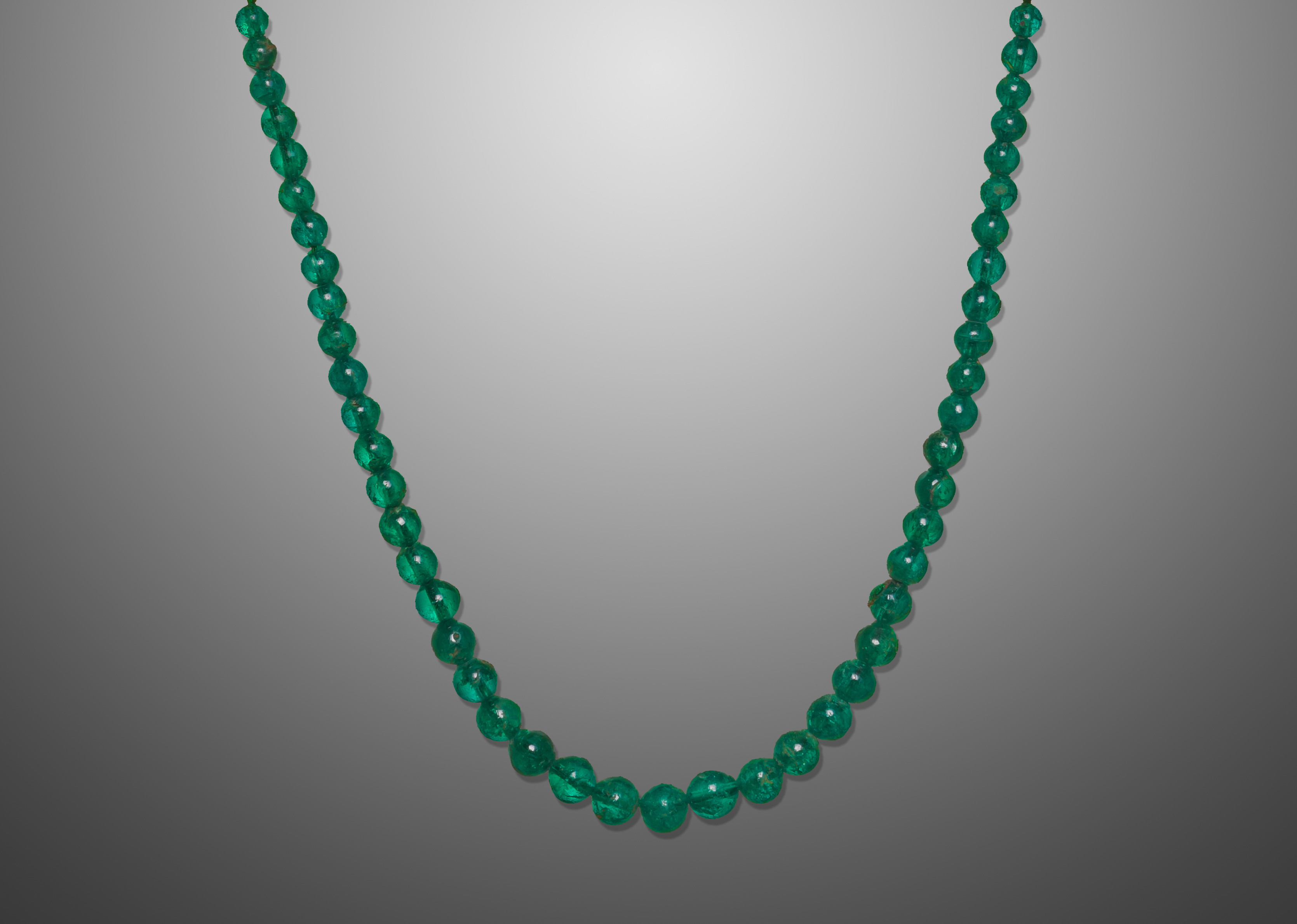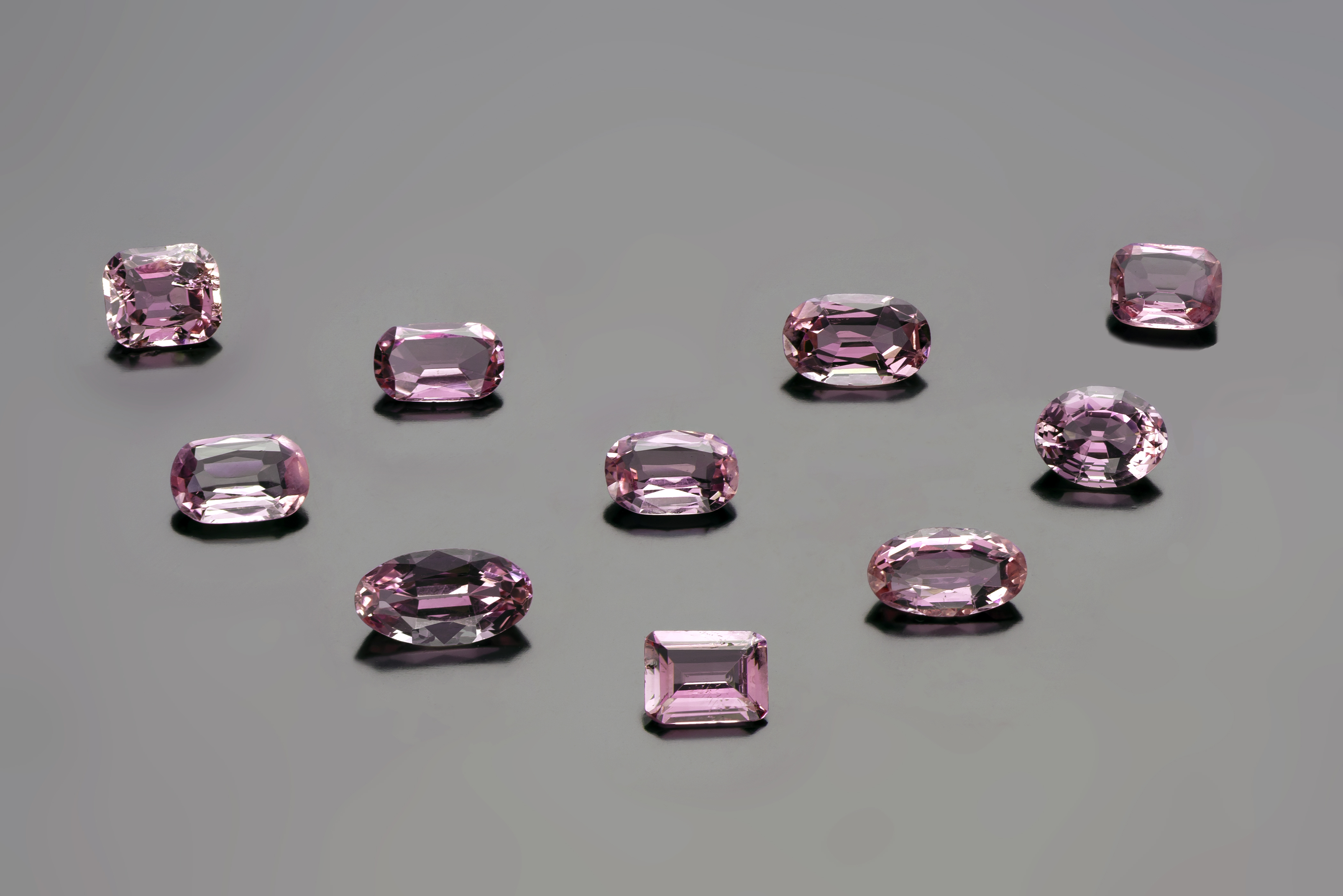

The Crown Jewels at the Musée de Minéralogie
The Musée de Minéralogie de MINES ParisTech presents its new permanent exhibition dedicated to the French Crown Jewels.

At the Musée de Minéralogie de MINES ParisTech, emeralds, topazes, and amethysts from the French Crown Jewels are on show in three display cases.
For some of the gemstones, it is their first public exhibition in some 130 years.
All in all, more than 150 gems from the royal collection are now on show in the museum’s collection.
Right: Permanent exhibition display cases at the Musée de Minéralogie. (© Musée de Minéralogie MINES ParisTech)
HISTORY OF THE CROWN JEWELS
The story of the French Crown Jewels began in the 16th century during the reign of François I, who decreed the collection to be the inalienable property of the monarch. An inventory dated 15th June 1530 proclaimed that "these rings are the gift of François I to his successors to the French crown; with each change, may their inventory, their state, weight, paint and metal be verified in the presence of said successors so that they may receive the letters patent which they shall keep for their heirs."
 From then on, the collection grew continuously, in particular during the reign of Louis XIV, under whom it became the largest of its kind in Europe. The king donned the Crown Jewels for the last time on 19th February 1715 to receive the Persian ambassador. Saint-Simon described the scene as follows: "His garments were bedecked with the Crown’s finest diamonds, some twelve million five hundred thousand pounds worth, and he bowed beneath their weight" (Mémoires, tome XII, chapter I). These extraordinary gems were set in jewels, necklaces, bracelets, and tiaras, or inlaid in crowns and ceremonial swords.
From then on, the collection grew continuously, in particular during the reign of Louis XIV, under whom it became the largest of its kind in Europe. The king donned the Crown Jewels for the last time on 19th February 1715 to receive the Persian ambassador. Saint-Simon described the scene as follows: "His garments were bedecked with the Crown’s finest diamonds, some twelve million five hundred thousand pounds worth, and he bowed beneath their weight" (Mémoires, tome XII, chapter I). These extraordinary gems were set in jewels, necklaces, bracelets, and tiaras, or inlaid in crowns and ceremonial swords.
The collection was stolen in 1792, but Napoleon I was able to reassemble the collection, restoring it to a near-complete state and rebaptizing it as the French Crown Jewels. An inventory was carried out between 1811 and 1812, and on 8th October 1813 the collection was valued at some 14,393,881.60 gold francs.
In 1887, the government of the Third Republic sought to auction off the Crown Jewels, which it considered as a symbolic vestige of the monarchy. However, the commission of experts charged with cataloguing and valuing the collection recommended that historically and mineralogically significant pieces be gifted to three institutions: the Musée du Louvre, the Muséum National d’Histoire Naturelle and the École des mines de Paris (today known as MINES ParisTech).
Above image: Exhibition of diamonds, pearls, and gemstones from the French Corwn Jewels at the pavillon de Flore, L’Univers illustré n°1673, 16th April 1887.

THE GEMSTONES ON DISPLAY
The Suites of Emeralds
A total of forty-two emeralds feature in the exhibition. These two suites of emeralds were originally set in the Napoleon III’s crown by the jeweller Lemonnier in 1855. The stones were excavated in the emerald mines of Muzo, Columbia.
Right: Series of cut emeralds (approximately 1 carat each), collections of the Musée de Minéralogie MINES ParisTech (© Musée de Minéralogie MINES ParisTech).

Emerald Bead Necklace
This string of 47 gems joined the royal collection sometime between the inventories carried out in 1791 and 1811: as such, it was likely seized from its original owner during the revolution. Their spherical cut is an unusual one for emeralds and makes the piece all the more unique. The stones were mined in Muzo, Columbia.
Left: Necklace of emerald beads from the former collection of the Crown Jewels, collections of the Musée de Minéralogie MINES ParisTech (© Musée de Minéralogie MINES ParisTech).
The Suite of Amethysts
These amethysts date from the 19th century, when they were particularly rare.
The stones were likely mined in the Russian Urals, and were once set in a piece of jewellery containing some two hundred and thirty five amethysts which François-Regnault Nitot created for the Empress Marie-Louise. Under Louis XVIII, the piece was dismantled, and most of the stones remained loose in the royal collection.
The permanent exhibition at the Musée de Minéralogie MINES ParisTech presents forty-four amethysts of the hundreds of stones gifted to museums in 1887. Another twelve are conserved at the Muséum National d’Histoire Naturelle.
Right: A selection of amethysts formerly set in the jewels of Empress Marie-Louise (© Musée de Minéralogie MINES ParisTech).
The Pink Topazes of the "Brazilian Rubies" Suite


The museum’s collections also feature a suite of pink topazes which were purchased by Napoleon I to create the jewels known as the "Brazilian Rubies." The loose gemstones were inventoried in 1811 and most were gifted to the École des Mines and to the Muséum National d’Histoire Naturelle in 1887. Of the fifty or so stones in the collections of the Musée de Minéralogie, thirty-three are on display in the permanent exhibition.
The topazes originate from Ouro Pret in the Minas Gerais region of Brazil.
Below: some of the museum’s pink topazes, also known as "Brazilian Rubies"(© Musée de Minéralogie MINES ParisTech).
THE MISSING GEMS
Certain stones from the Crown Jewels are no longer part of the collections of the Musée de Minéralogie. Over the years, some remarkable pieces have been sold or stolen.
- 900 pearls were sold on 16th May 1903 on the orders of the Ministry for Industry on the pretext that they were of no mineralogical interest.
- 2 ‘brilliant’ diamonds that were cut by François-Regnault Nitot between 1810 and 1812 for Napoleon I, and which weighed 7.10 and 5.44 carats respectively, were stolen along with other pieces in December 1909. This theft was part of a spate that struck the city of Paris and its museums. Under the Restoration, the diamonds had been set in the crown of Charles X.
PRACTICAL DETAILS
The exhibition was created with support from the Maison Riondet.
Find out about the Museum, its collections and exhibitions.


